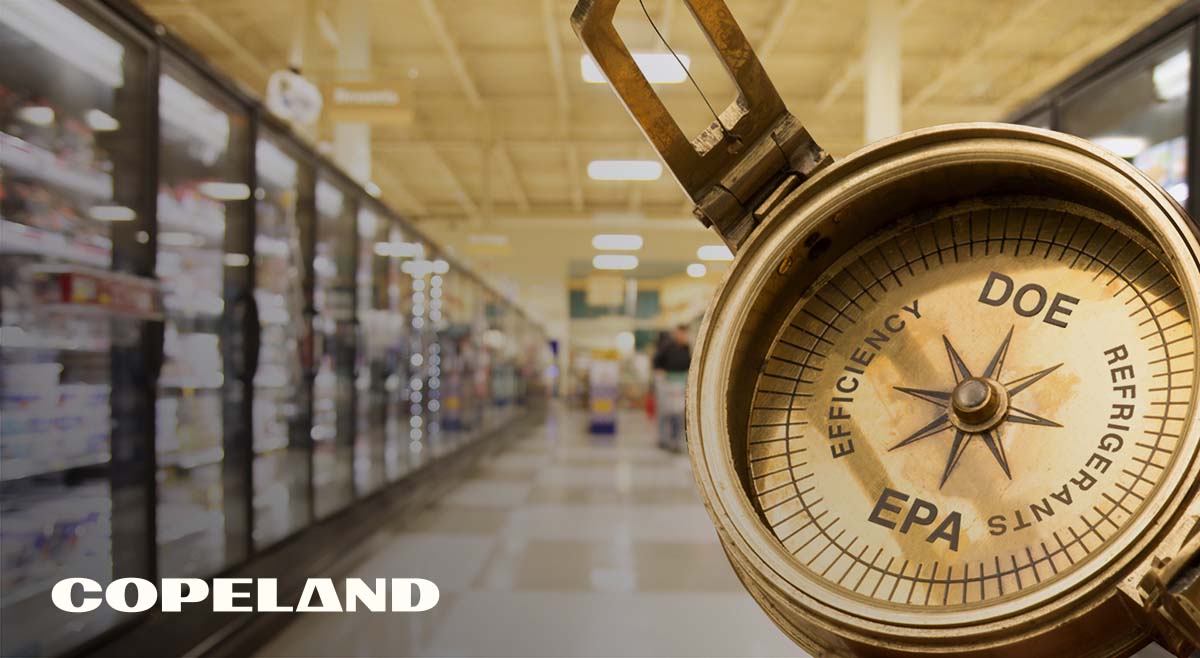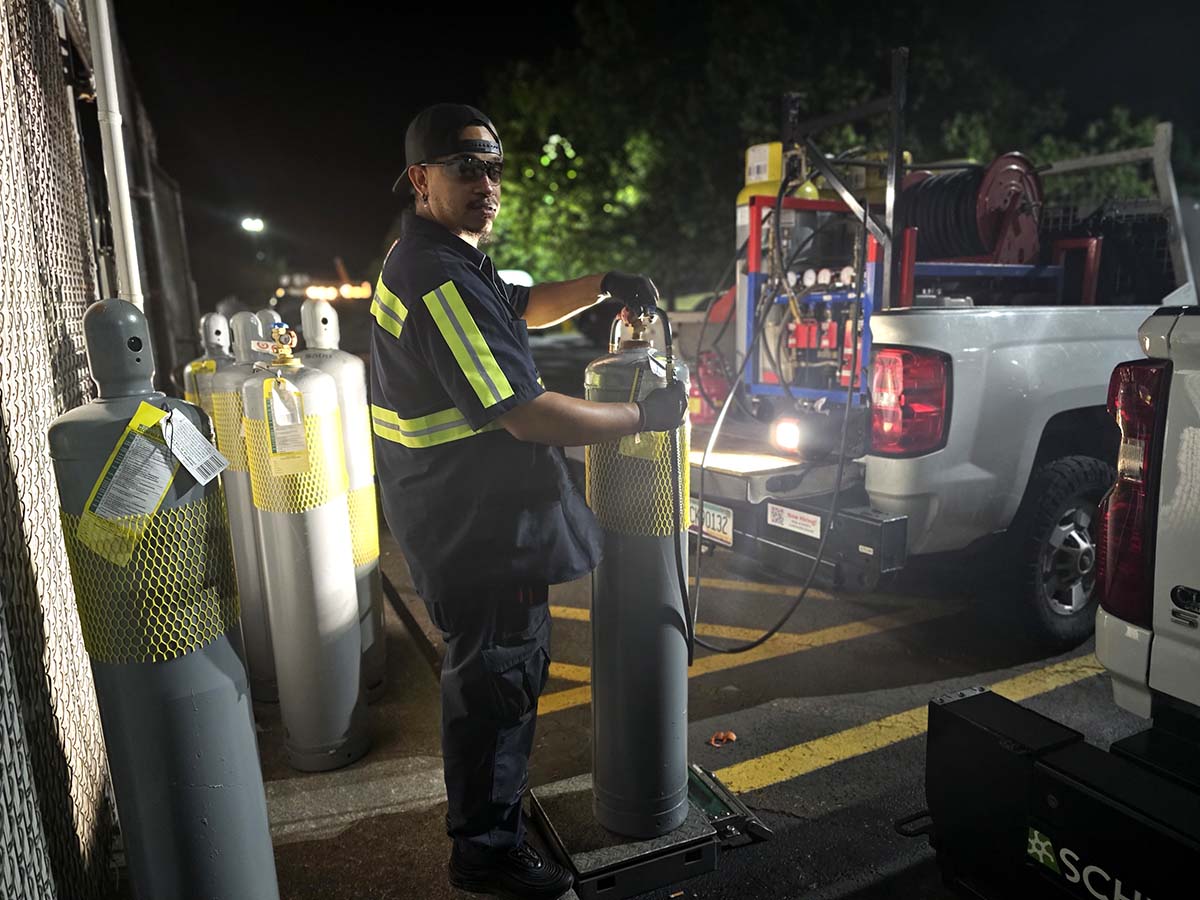As most already know, the AIM Act, which passed in December 2020, will reduce HFC refrigerant production by 85% by 2036. The initial reduction began last year with a 10% reduction in HFC production, but next year there will be an additional 30% cut, which will significantly impact the HVACR industry. In fact, experts are predicting that the steep reduction could result in shortages of popular refrigerants such as R-410A and R-134a, as well as a sharp increase in refrigerant prices.
Not surprisingly, the large cut in HFC production in 2024 could profoundly affect HVACR contractors, so in order to minimize disruptions in this shifting landscape, it is crucial to prepare now.
vice president of regulatory, codes, and environmental affairs
Johnson Controls
Price Hikes and Shortages
The AIM Act accelerated the phasedown of virgin HFCs, and as a result, there was little time for the HVACR industry as a whole to prepare for the steep stepdown in 2024, said Kate Houghton, vice president of sales and marketing at Hudson Technologies.
“This means contractors will likely be affected in several ways: limited access to certain high-GWP refrigerants such as R-404A, allocations of refrigerants based on past buying patterns from suppliers, and increased pricing and general uncertainty in the marketplace,” she said. “All of these could affect HVACR contractors in their daily business and cause disruption.”
Chris Forth, vice president of regulatory, codes, and environmental affairs at Johnson Controls noted, “Because this next step in the HFC phasedown is a substantially larger drop than we experienced in 2022, we anticipate the industry may feel a heightened awareness of supply limitations. With any decrease in supply, an increase in price could follow, making HFCs like R-410A more difficult to obtain.”
That’s not to say that contractors should panic, but they should pay attention to the availability and cost of refrigerant next year.
“It’s definitely something to be aware of,” said Jennifer Butsch, director of regulatory affairs at Copeland. “The baseline was calculated a decade ago, making this 30% reduction even more significant versus 2021 production and consumption quantities. Because the demand of HFCs in new equipment is proposed to take effect in later years (2025–2026), it’s questionable whether there will be enough existing refrigerants — especially those with high GWP — and/or if we may see price increases similar to what Europe has experienced. Increased prices on existing fluids or pockets of shortage could impact the repair-versus-replace dynamic.”
While contractors shouldn’t necessarily worry, they should be prepared for the changes that are coming, said Don Gillis, senior technical trainer at The Chemours Company.
“Preparation means training, which is key, and this should happen sooner rather than later,” he said. “Secondly, contractors have to be tuned into refrigerant reclaiming efforts. These will be bigger than they’ve ever been in the history of our trade and become increasingly important the more phasedowns reduce HFC consumption and production. We know that low supply and high demand drive prices up. It will be up to the contractor to stay aware of market changes and make the best decision for the end user, in terms of when to retrofit or replace equipment to run on new-generation HFO refrigerants.”
Get Ready
As Gillis mentioned above, in order to get ready for the refrigerant transition, contractors should be making sure that their technicians are educated on the new mildly flammable A2L refrigerants and are receiving proper training for working with them.
“I cannot emphasize enough the importance of in-house education for your technicians,” said Gillis. “There is a lot of data out there demonstrating that companies that send their technicians to training have a higher success rate than those that do not.”
Butsch also stressed the importance of receiving training in order to be familiar with lower-GWP options for both comfort cooling and commercial refrigeration equipment, including A2L, A3, and CO2 systems. In addition, she advises contractors to verify that they have the proper tools to service lower-GWP systems.
“Contractors can educate themselves about lower-GWP refrigerants by leveraging several Copeland resources, including our refrigerant regulations webpage (www.copeland.com/en-us/expertise/hvacr-regulations); the E360 Resources hub, which houses webinars, articles, white papers, and infographics (e360hub.emerson.com); Copeland’s online educational courses (https://emersonbeta.myshopify.com/collections/refrigerants-and-regulations); and our in-person training courses, such as Fit for the Future and CO2 Refrigeration,” said Butsch.

CONTRACTOR EDUCATION: Copeland offers several resources that can help educate contractors about lower-GWP refrigerants. (Courtesy of Copeland)
Forth agreed that training in the safe use, handling, transportation, and storage of new low-GWP A2Ls is paramount to a successful transition. He advised contractors to lean on reputable resources from manufacturers like Johnson Controls, as well as industry organizations such as ACCA, NATE, and ESCO Group.
“Training is available now, and it is important for contractors to begin expanding their knowledge before new equipment begins to enter the market, to help prepare for a successful transition,” he said.
Contractors will also want to review their EPA Section 608 licensing to be sure they are up to date with current certification and licensing requirements, said Forth. In addition, he noted that they should monitor the EPA for impending updates, which are expected to be released in the coming months as part of the AIM Act.
“It's also important for contractors to understand that, unlike with previous transitions, there is currently no EPA Significant New Alternatives Policy (SNAP) approved replacement for R-410A, that is classified ASHRAE as a Class 1, non-flame propagating fluid, and therefore no known drop-in refrigerant replacement for existing R-410A equipment,” said Forth.
Recover and Reclaim
Another significant way contractors can prepare for next year’s HFC production cut is to make sure that refrigerant is always properly recovered and reclaimed. As Taylor Ferranti, commercial vice president of refrigerant management at A-Gas noted, there is no way to reclaim refrigerants if they are not recovered in the first place.

RAPID RECOVERY: An A-Gas Rapid Recovery field service technician recovers refrigerant from a food retailer in Baltimore, Maryland. (Courtesy of A-Gas)
“There are solutions to help with jobsite refrigerant recovery, including A-Gas Rapid Recovery’s on-site high-speed refrigerant recovery service,” he said. “Our buyback program, among others out there, will purchase recovered refrigerants from HVACR contractors, which we then reprocess to the AHRI-700 standard. Keeping that continuous stream of recovered refrigerants to reclaimers is key.”
Martin Söderlund, residential aftermarket segment leader at Trane Residential agreed, urging contractors to “reclaim, reclaim, reclaim!” He noted that if more HFCs are not recovered and reclaimed, there could be a shortage greater than the demand required for servicing the current install base down the line.
“It’s the future supply of HFCs,” he said. “Our Trane Supply stores are ready to help any technician with our easy, hassle-free process. When customers bring their used refrigerant to Trane Supply stores, they can exchange full cylinders for empty ones and receive credit for certain refrigerants to use against future refrigerant purchases. In 2022, Trane Supply recovered more than 203,000 pounds of refrigerant from customers in 123 Trane Supply stores across the U.S.”
Still, not enough refrigerant is being recovered and reclaimed. Based on data released by the EPA, less than 2% of HFCs are recovered and reclaimed on an annual basis, said Houghton. That’s because until recently, contractors may have been more focused on the recovery of R-22 and CFCs, as these have been the most valuable refrigerants.
“Recently, recovered HFCs have dramatically increased in value,” she said. “Increased focus on HFC recovery will be needed to bridge the expected shortfall in virgin HFC availability in 2024 and beyond. Moreover, with more regulatory requirements demanding their use, reclaimed refrigerants will become more valuable.”
Forth believes that recovery rates may have been limited up until now, particularly with small-charge residential systems, because the process can be time intensive, and contractors may not always feel that the value of the recovered gas was economically advantageous.
“Updating inefficient recovery equipment can help to improve evacuation rates to reduce the time invested in recovering HFC gas,” said Forth. “And as restrictions on R-410A manufacturing are put in place, the value of reclaim will increase significantly.”
Ferranti added that contractors should make sure that their supplier has an active and robust reclaim program with their refrigerant supplier. “If your supplier does not offer reclaimed refrigerants or they don’t participate in a program with their refrigerant supplier, you may want to look at other options or ask them to participate in a reclaim program,” he said. “Otherwise, you may run the risk that they will not have the products you need to support your customers.”
The HVACR industry also needs to do a better job of educating technicians — both in trade schools and on the job — about the importance of reclaiming refrigerants, said Gillis.
“Contractors have a responsibility to make sure their technicians receive proper training — by recovery manufacturers — on how to recover refrigerants,” he said. “A contractor should never assume that just because they issued a technician a recovery machine, they know how to use it properly. I cannot say it enough: Training, training, training! Training is everything.”



Report Abusive Comment